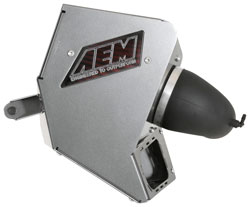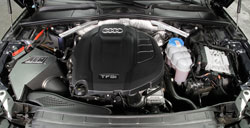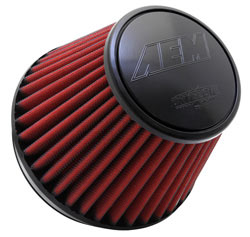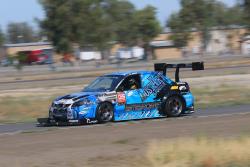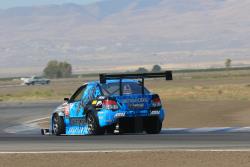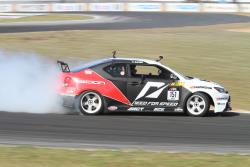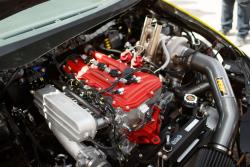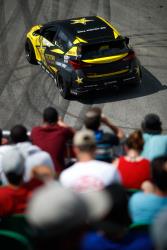
Roy Narvaez conquers the 2017 Pikes Peak Hill Climb in his Mitsubishi EVO | America has been described as a land of ‘opportunity’, and a young man named Roy Narvaez decided to seize that opportunity to make a better life for himself. As a teenager, Roy learned everything he could about computers, then parlayed that knowledge into a successful IT career. By 1999 he could finally afford to indulge his fascination with cars, so he bought a 1995 Mitsubishi Eclipse GSX. This little pocket rocket was equipped with the turbocharged Mitsubishi 4G63 2.0L, which sent 210-hp to all four wheels through a permanent AWD system. Roy said, “I was 20 something years old, and I thought that was the coolest, fastest thing that ever existed.”He soon discovered LA’s underground street racing scene and decided to try his hand at drag racing. It didn't take long for Roy to want even more power, and he eventually tuned the Eclipse all the way up to 700 hp. “This was before Fast & Furious came out, so there were only like 20 cars, and it was the same 20 cars every week. We used to race from like 10 o'clock at night, till 2 or 3 in the morning. And if a cop came by, they usually just asked if we were OK, then sometimes they would tell us stories about when they were young and used to race. Then that movie came out, and it kind of ruined the whole scene. It went from 20 guys having fun, to literally a couple of hundred. It was insane. There were people everywhere, people acting a fool, people crashing. So I got out of that scene and went to the Pomona Drag Strip to compete in the NHRA import circuit.” 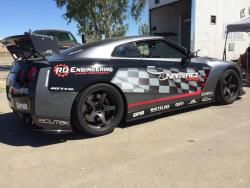
R35 Nissan GTR modified by Narvaez Racing | After a few years, Roy said he “made the grown-up decision” to sell his Eclipse, get out of the car scene and focus on his career. Then one day in 2009, he was driving home from work and passed what appeared to be a Nissan GT-R. Since he had been out of the car scene for several years, he didn't know that the R35 Nissan GT-R was being legally sold in the United States. So he followed the driver and asked him how he got it into the country. Much to his surprise, the owner told Roy that he had bought it at the local Nissan dealership. A year later, Roy had his very own GTR, and naturally, he started road racing. 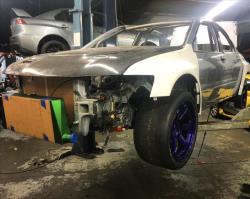
2004 Mitsubishi EVO VIII being rebuilt by Narvaez Racing for the 2015 Pikes Peak Hill Climb | By this time Roy had left the IT field, and started a successful chain of laundromats. So when his longtime friend and mechanic Robert Garcia suggested they go check out the Pikes Peak race, he was able to simply jump on a plane and fly out to Colorado. Roy first learned about the Pikes Peak Hillclimb during his street racing days and loved the idea of people drifting up a mountain. “I liked off-roading, I like racing, and it was like the perfect marriage of both. I wanted to do it but just couldn't afford it back then. When we were out there, I got to drive up the mountain in our rented Fiat. But I wasn't considering it because I felt that it was a little above my driving skills.”On the way back home, his friend Robert suggested they build a Pikes Peak car, and told him the owner of Road Race Engineering had the perfect car to use: a wrecked 2004 Mitsubishi EVO 8. Then one day the owner of RRE asked Roy if he wanted to buy the EVO. He offered to sell it to him cheap, but only if he was going to build a Pikes Peak car with it. Roy said “So I bought it, and it just sat there. I also applied to enter the race, and surprisingly I was excepted. This happened in February 2015, the race is in June, and the car wasn't even built.” So he went to the shop and gutted it to remove all of the unnecessary weight. 
Roy Narvaez finished 12th in the Time Attack 1 class at the 2017 Pikes Peak Hill Climb | The Hulk EVO as it would become known had been rather seriously rear-ended and required a fair amount of bodywork to be drivable. Once that was complete, they installed a roll cage, a new transmission, new axles, and got it wrapped. Roy continued, “To be honest with you, the car wasn't ready when we left. It had been built in 3 months, but still needed a windshield, it needed to be tuned, and there was no aero on it. So at the end of each practice today, we would go to a local shop in Colorado and work on the car. The EVO was finally finished on race day. And I actually qualified in the middle of the pack, with no aero on the car!” Incredibly, this was the first time that Roy had ever driven the car. However, on the morning of the race, weather conditions quickly deteriorated and Roy was only able to make it halfway up the mountain. 
Real-time shot of Roy Narvaez crashing at the 2016 Pikes Peak Hill Climb | With no luck climbing the 14,115 ft mountain, the crew of Narvaez Racing returned to California to finish building their car. After lots of fine tuning, they returned to Colorado, to once again take on the 12.42 mile Race to the Clouds. Except this time, they had plenty of time to practice, and the car ran great. Roy qualified in the top 10 of his class on Thursday, so Friday would have been an optional practice day. Initially, he wanted to take Friday off, that way everybody could just relax and enjoy the experience. But Roy eventually decided to go out for a practice run anyway.That Friday morning was rather cold, and during the first section of his practice session, Roy was unhappy with his performance. He explained, “I turned in too early, I braked too early, it was just a bad run. Then I started getting into the groove. So to make up, I started pushing it. and I was going way too fast into one of the turns. I had cold tires on a cold road, and I locked up the brakes. I knew I was going to hit, but it happened so fast, it was like I blinked and it was over. And once I landed, my first thought was “Man, this is going to be a lot of work for the crew” I felt bad for them. But it didn't dawn on me until later, that there was a big cliff on the other side!” 
The Mitsubishi EVO driven by Roy Narvaez nearly went off the mountain at the 2016 Pikes Peak Race | The damage to the little green EVO was pretty severe, and Roy was extremely lucky that his car landed where it did. Roy said that all of the drivers offered to lend a hand. “Time, tools, parts, some even offered to lend us a shop to do the work in. I've raced Time Attack, 24 hours of Lemons, drag racing, but I've never been a part of anything where people were willing to give up their time, and their parts, just to help you finish this race.” But after surveying the damage to his car, Roy decided not to continue. “I've already crashed with a great car, and I didn't want to put myself in the situation where we're running a car that might not be 100%." So Roy and his team returned home, disappointed that they were unable to finish the 2016 Pike's Peak Hill Climb for a second time. 
The Narvaez Racing Hulk EVO in a hail storm on Pikes Peak | Over the next year, Narvaez Racing repaired the Hulk Evo with the help of their friends at Road Race Engineering. Many of the EVO’s parts got either updated or upgraded, in preparation for the 2017 Pikes Peak International Hill Climb. Roy said: “They say the third year is this charm, and this year I made it all the way to the top of the mountain!" With a time of 12:15.773, he finished in 12th place out of 24 cars in the Time Attack 1 class for modified production cars. This is a particularly tough class to compete in, considering it’s filled with professional racing drivers like Rhys Millen, who placed first in this class with a staggering time of 9:47.427. David Donohue, who won the GT2 Class at LeMans in 1998, finished second in the Time Attack 1 class with a time of 9:49.954. British Touring Car Championship driver Robb Holland and Honda R&D Engineer James Robinson (driving a factory-sponsored Acura NSX) also competed in Roy’s class. So finishing in the middle of a field packed with that much talent is quite an accomplishment. 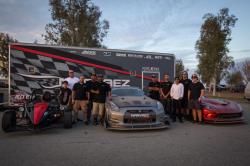
Narvaez Racing Team posing with their Ariel Atom, R35 Nissan GT-R, and Dodge Viper ACR | “I was pushing the car to its limits on the first and middle sections, then the fog started to roll in, which makes it difficult to figure out where you're going to brake. So I slowed down a little bit towards the top. But when I reached the top, I was just so happy that I made it. It took three years to reach this goal. It's not like any other race that I've ever competed in. When you get to the top, all of the other drivers are happy for you. The Pikes Peak Hillclimb isn't about competing against other drivers so much, as it's man and machine versus the mountain.”As far as the 2018 Pikes Peak Hill Climb is concerned, Roy says he may return with the Hulk Evo, however, he hasn't ruled out taking something different. He does have a race-prepped Nissan GTR, a Dodge Viper ACR, and an insane little Ariel Atom that runs on ethanol. So he has a few interesting options already sitting in his garage. But no matter what car he brings, we at AEM can't wait to watch Roy Narvaez compete in the next Race to the Clouds. |

